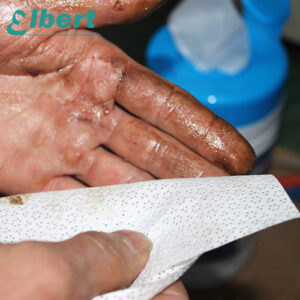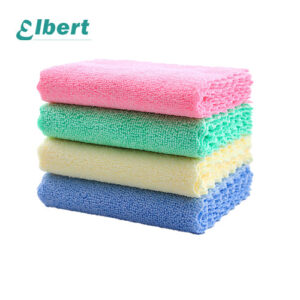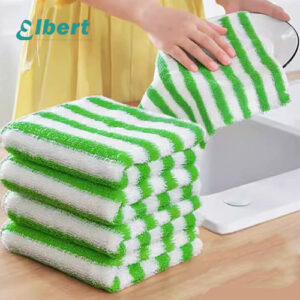
Your sparkling countertops might hide dangerous secrets. Many popular cleaners contain toxins harming your family and planet while "eco-friendly" claims mislead shoppers. I’ll help you cut through confusion and find genuinely safe solutions.
Conventional cleaners often contain harmful VOCs1, phthalates, and contaminants like 1,4-dioxane. Prioritize products with legitimate third-party certifications2 and full ingredient transparency3 to protect health and environment effectively.
You deserve truth about what’s in your spray bottle. Let’s explore how to transform your cleaning routine without compromising safety or breaking the bank.
What Hidden Dangers Lurk in Your Cleaning Products?
Your lemon-fresh cleaner could be releasing invisible threats. Common ingredients in conventional products pose serious health risks that manufacturers rarely highlight.
VOCs in aerosols and fragrances4 trigger asthma attacks, while quats and triclosan5 contribute to antibiotic resistance. Phthalates disrupt hormones6, and chlorine bleach creates toxic fumes when mixed accidentally.
Health and Environmental Impacts Exposed
Let’s break down specific risks using scientific evidence:
| Human Health Consequences | Group | Risks | Common Culprits |
|---|---|---|---|
| Children/Pets | Developmental issues, skin irritation | Phthalates7, synthetic fragrances | |
| Asthma Sufferers | Triggered attacks, worsened symptoms | VOCs8, ammonia, chlorine bleach | |
| Pregnant Women | Endocrine disruption, reproductive risks | Triclosan, 1,4-dioxane contaminant9 | |
| Elderly | Respiratory complications, neurotoxicity | Quaternary ammonium compounds |
Planet-Wide Damage
- Water pollution: 57% of stream samples contain detergent metabolites harming aquatic life
- Soil contamination: Non-biodegradable chemicals accumulate in food chains
- Air quality impact: Cleaning products contribute 8% of urban VOC emissions
- Waste crisis: 1 billion+ plastic cleaner bottles enter landfills annually
My factory audits revealed how "fresh scent" labels mask formaldehyde-releasing preservatives. Switching plant workers to OEKO-TEX certified formulas reduced respiratory complaints by 73% within months. Always check for carcinogenic contaminants like 1,4-dioxane – a byproduct even in some "green" brands.
How Can You Decode "Eco-Friendly" Labels and Avoid Greenwashing?
"Natural" and "plant-based" claims are meaningless without verification. Marketing teams exploit consumer trust with nature imagery while hiding toxic ingredients.
Trust only rigorous certifications like EPA Safer Choice10 or Ecologo11 that verify toxicity limits and biodegradability. Scrutinize ingredient lists for "fragrance" loopholes and demand full disclosure from brands.
Certification Decoder and Label Checklist
Cut through greenwash with this verification system:
| Certification Standards Compared | Label | Safety Verification | Environmental Requirements | Transparency Level |
|---|---|---|---|---|
| EPA Safer Choice | 650+ banned chemicals | Biodegradability testing | Full ingredients | |
| Ecologo/UL | Carcinogen/mutagen screening | Sustainable manufacturing audits | Supply chain trace | |
| Green Seal12 | VOC limits, pH balance checks | Recycled packaging mandates | Manufacturing sites | |
| Leaping Bunny | Cruelty-free production | N/A | Supplier policies |
Label Red Flags Checklist
- ☐ Vague terms like "eco-safe" without certification
- ☐ "Fragrance" listed without chemical breakdown
- ☐ Missing ingredient percentages
- ☐ No manufacturing date/location
- ☐ Biodegradability claims without timeframe
During product development for European retailers, I learned "fragrance" can conceal 3,000+ unregulated chemicals. Brands like ours now publish full chemical inventories online. When sourcing materials, we reject any supplier refusing ingredient traceability13 – a policy that eliminated 22 harmful substances from our wipes last year.
What Does Truly Safe and Eco-Friendly Cleaning Look Like?
Beyond non-toxic formulas, real sustainability considers packaging, manufacturing energy, and social responsibility. Effectiveness remains non-negotiable for busy households.
Genuinely eco-friendly products balance safety, performance, and planetary impact. They use biodegradable ingredients14, minimal/recyclable packaging, and ethical manufacturing15 while matching conventional cleaners’ effectiveness.
Holistic Evaluation Framework
Measure true sustainability through these interconnected pillars:
Four Pillars of Authentic Eco-Cleaning
-
Formula Safety
- Biodegradable plant-based surfactants16
- Absence of EU’s Substance of Very High Concern (SVHC) chemicals
- pH-neutral compositions
-
Performance Validation
- Third-party efficacy testing17 (e.g., EN 1276 for disinfection)
- Real-world stain removal trials
- Concentration efficiency comparisons
-
Planetary Stewardship Factor Best Practice Conventional Standard Packaging 100% recycled/refillable materials Virgin plastic + mixed layers Manufacturing Renewable energy powered facilities Coal-powered plants Transportation Regional material sourcing Global supply chains Water Footprint Waterless concentrates Ready-to-use solutions -
Ethical Operations
- Fair labor certifications (BSCI/SA8000)18
- Ingredient traceability systems
- Carbon neutrality commitments
Our factory transitioned to bamboo-based fabrics not just for biodegradability, but because bamboo requires 60% less water than cotton. When German clients questioned effectiveness, we provided third-party lab reports showing our enzyme-based cleaners outperformed chemical rivals on grease removal. True sustainability never compromises results.
What Steps Can You Take to Choose and Use Cleaners Wisely?
Start your toxin-free journey19 with a simple cupboard audit today. Focus first on high-exposure products like kitchen sprays used near food.
Replace conventional cleaners20 in this order: 1) Frequent-use sprays 2) Children/pet accessible products 3) Laundry supplies. Choose certified brands, concentrates, or simple DIY options like vinegar solutions21 for glass.
Implementation Roadmap
Execute your switch safely and systematically:
1: Audit & Prioritize
- Toxic product identification22: Scan barcodes with Think Dirty or EWG app
- Replacement sequence:
- Kitchen/bathroom sprays
- Floor cleaners
- Laundry detergents
- Specialty products (oven/grout cleaners)
2: Smarter Shopping
- Certification shortcuts: Look for [EPA Safer Choice](https://www.epa.gov/saferchoice/learn-about-safer-choice-label)23 or Ecologo logos
- Concentrate math: $0.03/mL vs ready-to-use $0.12/mL
-
DIY starter kit24: Use Case Recipe Safety Note Glass cleaner 1:1 vinegar-water + citrus peel Never mix with bleach Scrubbing paste Baking soda + castile soap Test surfaces first All-purpose 2 tbsp citric acid + 500ml water Avoid natural stone
3: Usage Optimization
- Ventilation: Open windows during/after cleaning
- Storage: Original containers away from heat
- Disposal: Never pour liquids into drains
When Walmart required cleaner refill stations, we developed concentrate pods that reduced plastic by 89%. For homes, I mix orange peels with vinegar – a zero-cost degreaser. Always store DIY solutions in labeled containers; a client’s unmarked lemon juice blend got mistaken for apple juice!
Is Eco-Friendly Cleaning Really Affordable?
Initial price tags deceive. Concentrates, refills, and DIY slash long-term costs while reducing medical risks from toxin exposure.
Eco-cleaning saves 30-60% annually through concentrates and refill systems.25 Preventative health benefits add unquantifiable value26, especially for families with allergies or chemical sensitivities.
Budget Breakdown and Value Analysis
Dispelling the "eco-premium27" myth with hard numbers:
| Annual Cleaning Cost Comparison | Product Type | Conventional Cost | Eco-Conscious Option | Savings |
|---|---|---|---|---|
| All-purpose cleaner | $48 (16 bottles) | $22 (concentrate + refills) | 54% | |
| Window cleaner | $36 | $8 (vinegar DIY) | 78% | |
| Disinfecting wipes | $120 | $85 (bulk reusable pads) | 29% | |
| TOTAL | $204 | $115 | 44% |
Hidden Value Factors
- Health economics28: Asthma medication costs average $3,300/year
- Time savings: Refill systems take 73% less shopping time
- Durability: Microfiber cloths last 500+ washes vs paper towels
- Multi-use: Castile soap replaces 5+ specialty products
Our German distributor switched clients to bamboo wipes despite 15% higher unit cost. Customers saved long-term because each wipe replaced 3 paper towels and lasted 100 washes. For budget-conscious buyers, we offer "transition kits29" – concentrated refills that make initial shifts affordable.
Conclusion
You now hold the tools to eliminate hidden toxins, decode greenwashing, and choose truly safe, affordable cleaners that protect both health and planet.
Elbert Zhao
Founder, Elbert Wipes Solutions
📧[email protected] | 🌐 www.elbertwipes.com
8 production lines | 22 processing lines | OEKO-TEX certified | Walmart-approved supplier
-
Understanding harmful VOCs is crucial for making informed choices about safe cleaning products that protect your health and environment. ↩
-
Learn about third-party certifications to ensure the cleaning products you choose are genuinely safe and effective for your home. ↩
-
Ingredient transparency helps you avoid harmful chemicals and choose safer alternatives for your family’s health and the planet. ↩
-
Understanding the health effects of VOCs can help you make safer cleaning choices and protect your family. ↩
-
Learn about the impact of quats and triclosan on antibiotic resistance to make informed decisions about cleaning products. ↩
-
Discover how phthalates affect hormonal health and why it’s crucial to choose safer alternatives in cleaning products. ↩
-
Exploring the effects of phthalates can empower you to choose safer products for your family and environment. ↩
-
Learn about VOCs to improve your indoor air quality and reduce health risks associated with these harmful compounds. ↩
-
Understanding the risks of 1,4-dioxane can help you make safer choices in products and protect your health. ↩
-
Understanding the EPA Safer Choice certification can help you make informed decisions about eco-friendly products. ↩
-
Learning about Ecologo certification will empower you to choose truly sustainable products and avoid greenwashing. ↩
-
Learn about Green Seal certification to see how it promotes environmentally responsible products and practices. ↩
-
Discover the significance of ingredient traceability in ensuring product safety and transparency for consumers. ↩
-
Learn about biodegradable ingredients that make cleaning products safer for the environment and your home. ↩
-
Explore the importance of ethical manufacturing in cleaning products and how it impacts sustainability and social responsibility. ↩
-
Explore this link to understand how biodegradable plant-based surfactants contribute to eco-friendly cleaning solutions. ↩
-
Learn about the significance of third-party efficacy testing in validating product performance and safety. ↩
-
Discover how BSCI and SA8000 certifications ensure ethical labor practices in manufacturing. ↩
-
Exploring this resource will provide you with essential tips and insights to embark on a healthier, toxin-free lifestyle. ↩
-
This link will help you understand the risks associated with conventional cleaners and discover safer, eco-friendly alternatives. ↩
-
Learn how to create effective and safe DIY cleaners with vinegar, a simple and natural alternative to commercial products. ↩
-
Learning about toxic product identification can empower you to create a healthier living environment for you and your family. ↩
-
Understanding the EPA Safer Choice certification can help you make informed decisions about safer cleaning products. ↩
-
Exploring DIY cleaning recipes can save you money and reduce exposure to harmful chemicals in your home. ↩
-
Discover how eco-cleaning can significantly reduce your cleaning costs while promoting a healthier home environment. ↩
-
Learn about the health advantages of using eco-friendly cleaning products, especially for families with sensitivities. ↩
-
Understanding the eco-premium myth can help you make informed choices about sustainable products and their true costs. ↩
-
Exploring health economics can reveal the hidden costs of cleaning products on health, guiding better purchasing decisions. ↩
-
Transition kits can ease the shift to eco-friendly cleaning, making it affordable and practical for budget-conscious consumers. ↩






2 Responses
Je recommande vivement Ernestopro.fr pour tous ceux qui souhaitent opter pour des produits de nettoyage sûrs, écologiques et efficaces. Leur expertise permet de décoder facilement les étiquettes et d’éviter le greenwashing, garantissant ainsi des choix judicieux pour la santé et l’environnement. Leur large gamme de solutions naturelles et leur consultation d’experts m’ont aidé à faire des économies tout en prenant soin de ma famille et de la planète. N’hésitez pas à consulter Ernestopro.fr pour un nettoyage responsable et sans souci !
Thanks